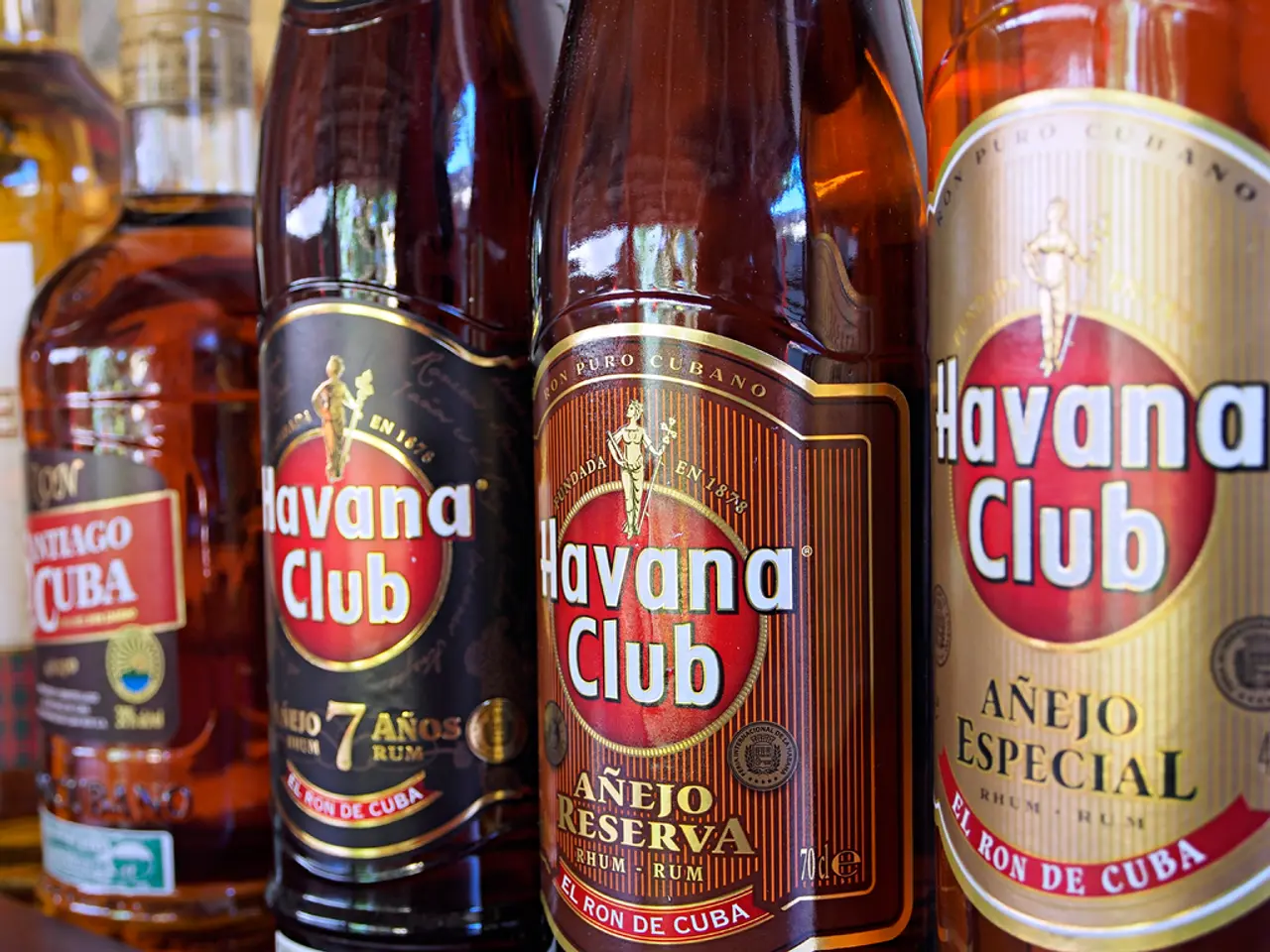Hops and their role in beer fermentation
In the realm of beer brewing, few ingredients have undergone such a significant transformation as hops. This humble flower, originating in Asia over one million years ago, has played a pivotal role in shaping the brewing industry for over a thousand years.
The earliest written record of hops being used in beer dates back to 822 AD, documented by the Carolingian Abbot Adalard of Corbie. However, it wasn't until the 9th century that hops began to gain traction as a flavouring agent in beer. Prior to this, brewers relied on a mixture of herbs called gruit, which didn't possess the same preservative qualities as hops.
The major breakthrough in hop use came in the 13th century in northern Germany. Hopped beer rapidly improved brewing by enhancing flavour and extending shelf life, allowing for broader distribution and export. Medieval breweries in Bohemia further perfected the use of hops around this time, and the method spread across Europe to Holland, Flanders, Brabant, and England by the late 15th century.
England had particular brewing traditions, where ale and beer were brewed separately, with ale usually remaining unhopped. The Brewers Company of London even prohibited the addition of hops to ale, showing initial resistance to hopped beer there.
The evolution of hops continued with the rise of large-scale and more standardized brewing operations in medieval Europe, replacing small home brews. This was fueled by hops’ preservative qualities supporting wider distribution and consistent quality.
In modern times, hop use has evolved with scientific advances revealing the complex aromatic compounds (terpenes and thiols) responsible for hops' flavour and aroma. Today, advanced hop products and terpene extraction allow brewers to achieve more consistent, precise, and innovative hop flavours at scale, supporting the craft beer revolution and consumer demand for diverse beer profiles.
Hops come in over 150 varieties, each with its own characteristics. Fresh hops, also known as wet hops, deliver a unique flavor to beer and should be used immediately after harvest for the fullest potential in flavours and aromas. Lagers are traditionally brewed with Noble Varieties of hops, which offer subtle flavors that can be earthy, grassy, add spice, and mild citrus flavors. In IPAs, flavors and aromas are driven by hop additions after the 30-minute mark, with late additions, whirlpool additions, and dry hop additions being common.
Homebrewers should consider creating a hop-back in their mash tun or using a muslin bag to steep their fresh hops in hot wort before transferring to the fermentation vessel. To avoid "hop creep" in beer, it is recommended to lower the temperature of the beer to below the fermentation temperature of the yeast, and to purge the fermenter with CO2 to avoid picking up oxygen.
Hops should be stored in ideal conditions to remain fresh, such as in a freezer, vacuum sealed, and purged with CO2 or nitrogen to preserve their potency. Matt Dailey, a high school emotional support teacher, recommends storing hops in resealable bags or containers to extend their storage life.
Newer American, Australian, and New Zealand hop varieties are often used for later additions in beer, such as late boil additions, whirlpooling, or dry hopping. Pelletized hops, which have gone through the drying and pelletizing process, last more than a year in a freezer and are consistent in alpha acids in a harvest year.
Brewers today are concerned with varieties that lend themselves to high flavour and aromatics, such as Citra, Mosaic, Simcoe, and Galaxy. These hop varieties can offer flavours that range from fresh fruit, dank pine, bright earthiness, and white grape.
In summary, hops moved from a little-known and difficult-to-use herb in the early Middle Ages to a key ingredient that transformed brewing by the 13th century, enabling beer preservation, export, and flavour innovation. This centuries-long evolution continues today with scientific and technological innovations enhancing how brewers use hops in beer production.
In the realm of health-and-wellness, the advancements in hop cultivation and utilization can serve as a metaphor for human progress, as they transformed a flavoring agent in an ancient concoction to a key player in health-conscious beverages. The novel science behind hops, particularly the understanding of its complex aromatic compounds and the crafting of advanced hop products, can analogously be applied to the pursuit of fitness-and-exercise, nutrition, and the development of sports supplements, extending their potential for innovation and personalization.
As hops have evolved to meet the needs of both traditional and modern brewing, so might future nutritional and athletic supplements adapt to the preferences and requirements of diverse consumers across the health-and-wellness sector. Just as brewers now have access to a multitude of hop varietals for different brewing styles, consumers of nutritional supplements may soon benefit from the selection of targeted compounds derived from a wide array of natural sources, each with its unique health benefits and taste profiles.







